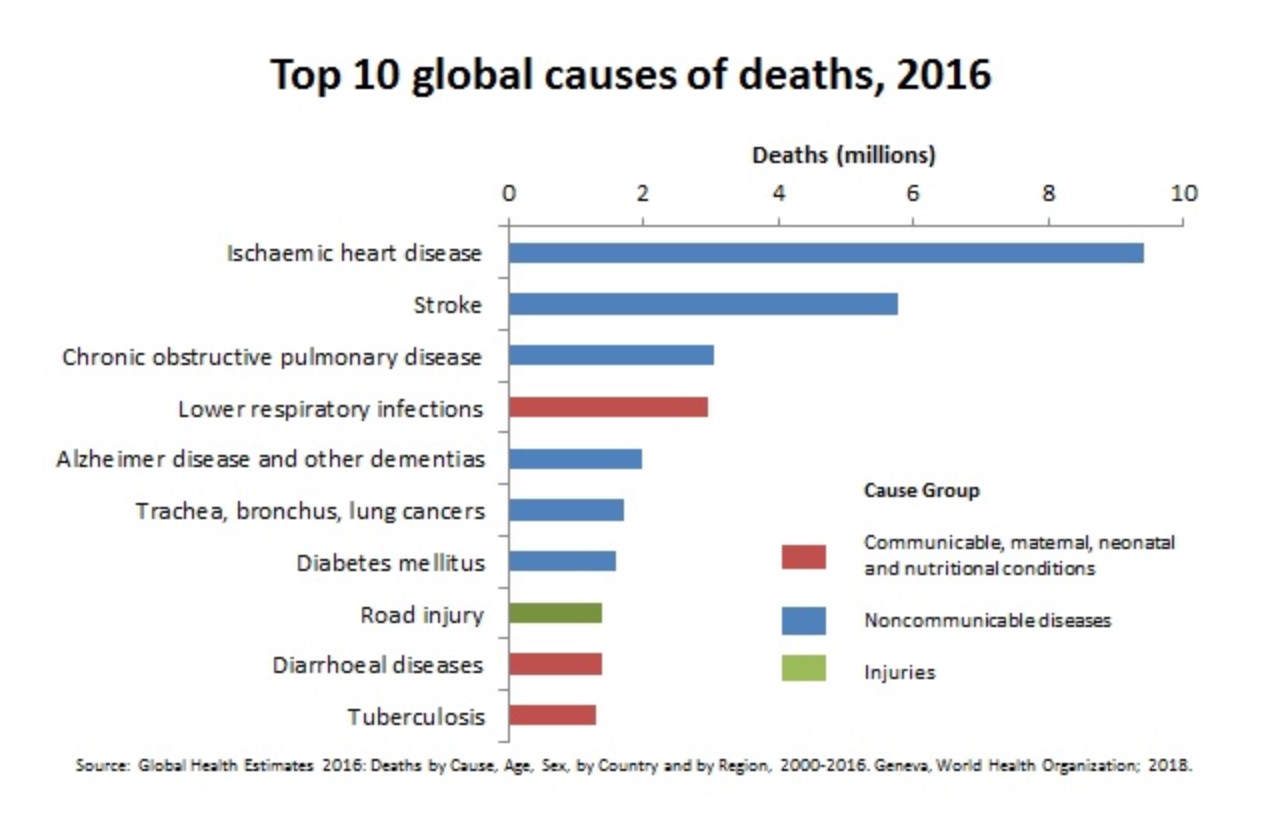On 31 December 2018, the Breitbart.com website reported under the headline "Abortion Leading Cause of Death in 2018 with 41 Million Killed" that "there have been some 41.9 million abortions performed in the course of the year," making abortion "the number one cause of death worldwide in 2018, with more than 41 million children killed before birth."
That article spawned a ripple of similar reports on various other sites, most of which referred back to the Breitbart piece, which itself rested on a figure gleaned from Worldometers, a real-time tool that "analyzes the available data, performs statistical analysis, and builds our algorithm [to feed our] real time estimates." Worldometers states that its abortion figures refer to induced abortions (as opposed to miscarriages), and that:
The data on abortions displayed on the Worldometers' counter is based on the latest statistics on worldwide abortions published by the World Health Organization (WHO).
According to WHO, every year in the world there are an estimated 40-50 million abortions. This corresponds to approximately 125,000 abortions per day.
However, the most recent figure on abortions from WHO we could locate dated from 2014 and was slightly higher than Worldometers' tally. WHO estimated that between 2010 and 2014, an average of 56 million induced abortions occurred worldwide each year.
If WHO's estimate of 56 million abortions annually held steady through 2016, when they released their survey on the top ten leading causes of death globally, it would be true that the number of abortions worldwide outnumbered overall deaths from heart disease and stroke, the top two causes of death that year. In 2016, ischemic heart disease and stroke killed a total of 15.2 million people worldwide, according to WHO, noting that "These diseases have remained the leading causes of death globally in the last 15 years":

We can infer from WHO statistics that the difference between the number of abortions worldwide versus the number of deaths from heart disease and stroke worldwide is not a new dynamic, although viral stories proclaiming that abortions "now" outnumber deaths from those other causes imply that fact is a recent development.
Stating that abortion is the "leading cause of death" worldwide (as opposed to a medical procedure) is a problematic pronouncement, because that stance takes a political position, one which is at odds with the scientific/medical world. The medical community does not confer personhood upon fetuses that are not viable outside the womb, so counting abortion as a "cause of death" does not align with the practices of health organizations such as WHO and the Centers for Disease Control and Prevention (CDC), as Heather Boonstra, director of public policy for the reproductive health research organization Guttmacher Institute, told us:
Abortion is a legal, constitutionally protected medical procedure in the United States. It’s not considered a cause of death by CDC, WHO and other leading authorities, and statistics on induced abortion are excluded in the CDC’s national fetal-death statistics.
The legal, philosophical, religious, and scientific arenas provide no definitive answers as to when personhood begins. Medical advances continue to push the stage at which a fetus can be considered viable outside the womb, as Wired reported in 2015:
When life begins is, of course, the central disagreement that fuels the controversy over abortion. Attacks on abortion rights are now more veiled and indirect -- like secret videos pointing to Planned Parenthood’s fetal tissue donations, or state legislation that makes operating abortion clinics so onerous they have to shut down. But make no mistake, the ultimate question is, when does a fetus become a person -- at fertilization, at birth, or somewhere in between?
Here, modern science offers no clarity. If anything, the past century of scientific advances have only made the answer more complicated. As scientists have peered into wombs with ultrasound and looked directly at sperm entering an egg, they’ve found that all the bright lines they thought existed dissolving.
Concluding an entry on the topic, RationalWiki quotes developmental biologist Scott Gilbert in saying that "The entity created by fertilization is indeed a human embryo, and it has the potential to be human adult. Whether these facts are enough to accord it personhood is a question influenced by opinion, philosophy and theology, rather than by science."
Although the U.S. Supreme Court ruling in the landmark 1973 Roe. v. Wade case held that unduly restrictive state regulation of abortion was unconstitutional, fetal personhood very much remains a legal issue and not merely an abstract philosophical one. As the New York Times reported, the enactment of fetal personhood statutes in some states has resulted in the prosecution of women over circumstances that ended or endangered their pregnancies:
You might be surprised to learn that in the United States a woman coping with the heartbreak of losing her pregnancy might also find herself facing jail time. Say she got in a car accident in New York or gave birth to a stillborn in Indiana: In such cases, women have been charged with manslaughter.
In fact, a fetus need not die for the state to charge a pregnant woman with a crime. Women who fell down the stairs, who ate a poppy seed bagel and failed a drug test or who took legal drugs during pregnancy — drugs prescribed by their doctors — all have been accused of endangering their children.
So what motivates these prosecutions? The reality is that, in many cases, these women are collateral damage in the fight over abortion. As the legal debate over a woman’s right to terminate her pregnancy has intensified, so too has the insistence of anti-abortion groups that fertilized eggs and fetuses be granted full rights and the protection of the law — an extreme legal argument with little precedent in American law before the 1970s.
Frustrated by the Roe v. Wade decision that legalized abortion, many in the anti-abortion movement hope for a sweeping rollback under a conservative Supreme Court — one that would block access to abortion even in states that protect women’s access to such health services.
